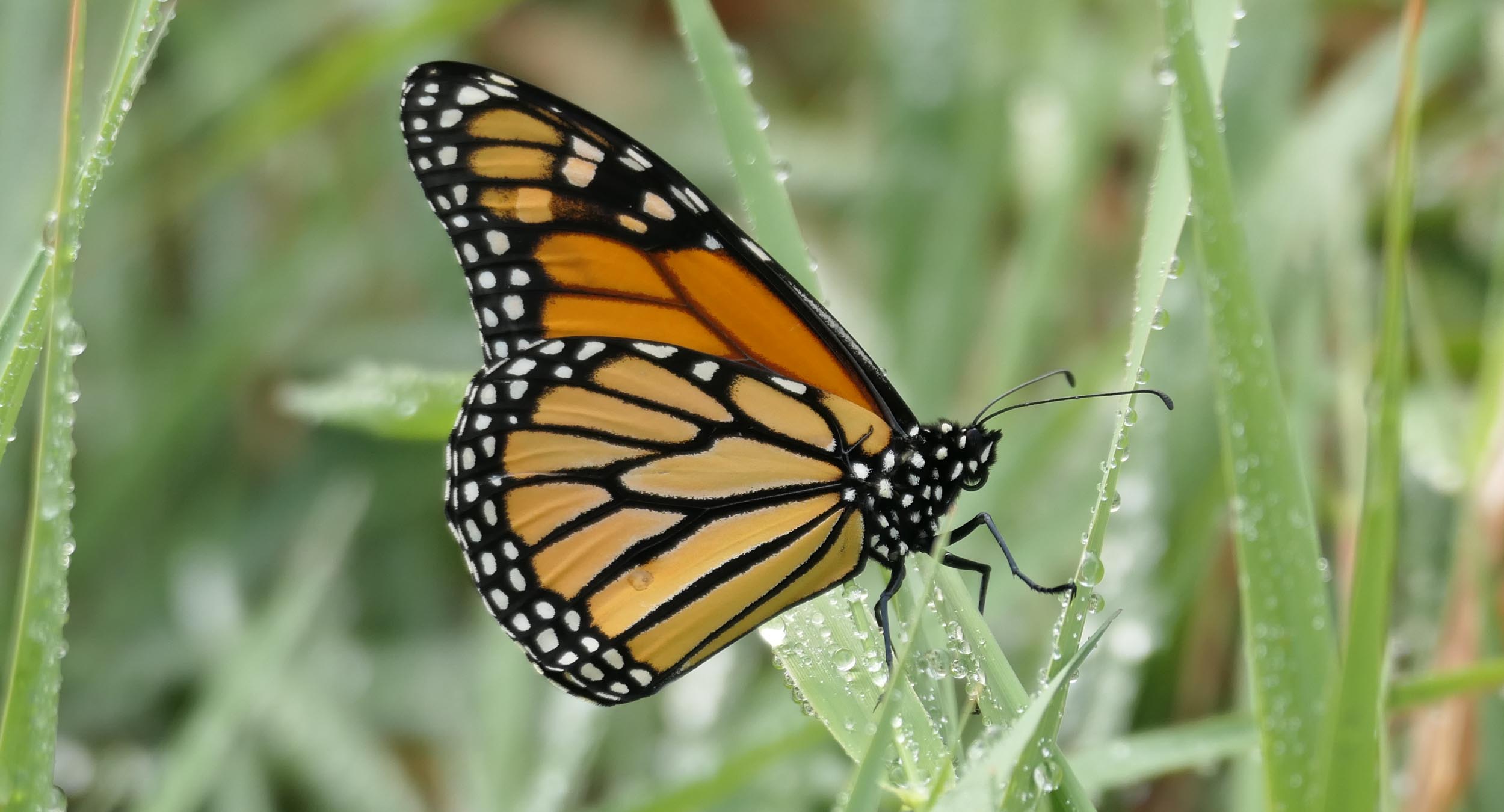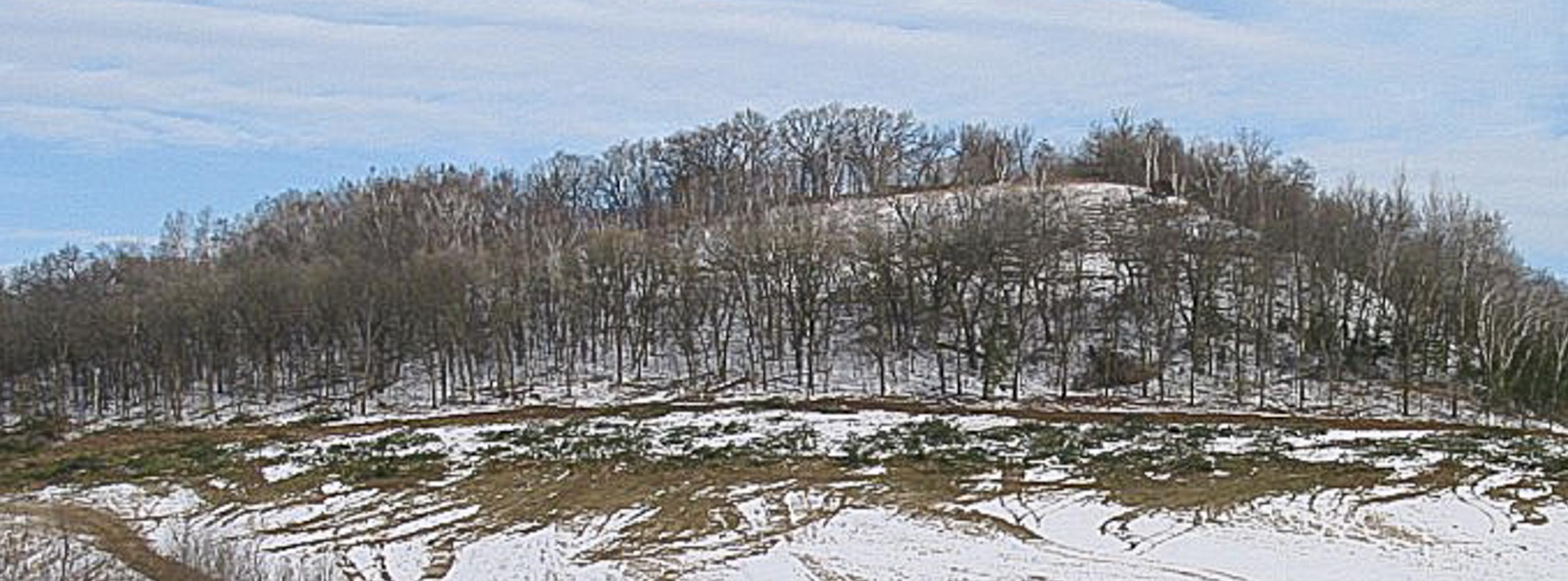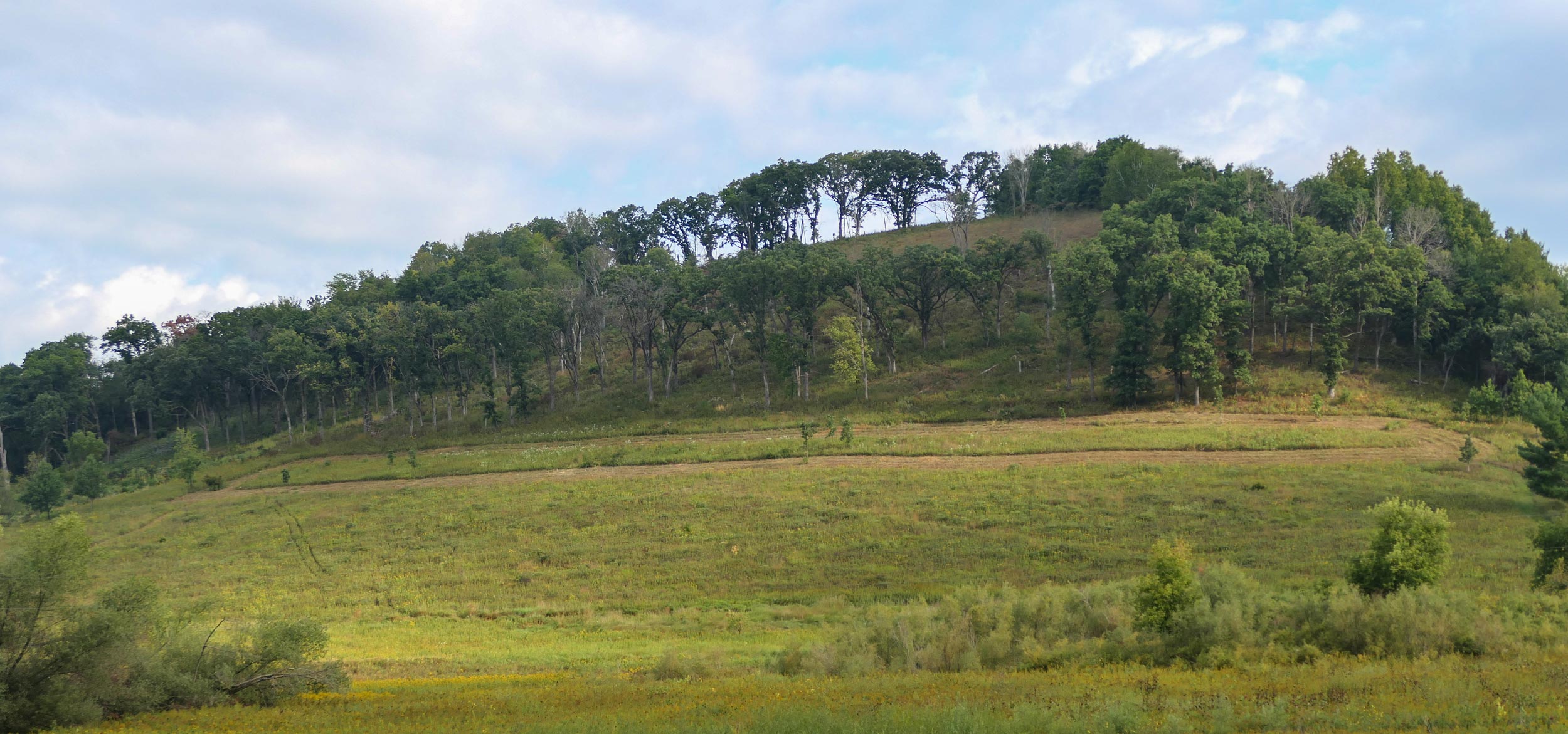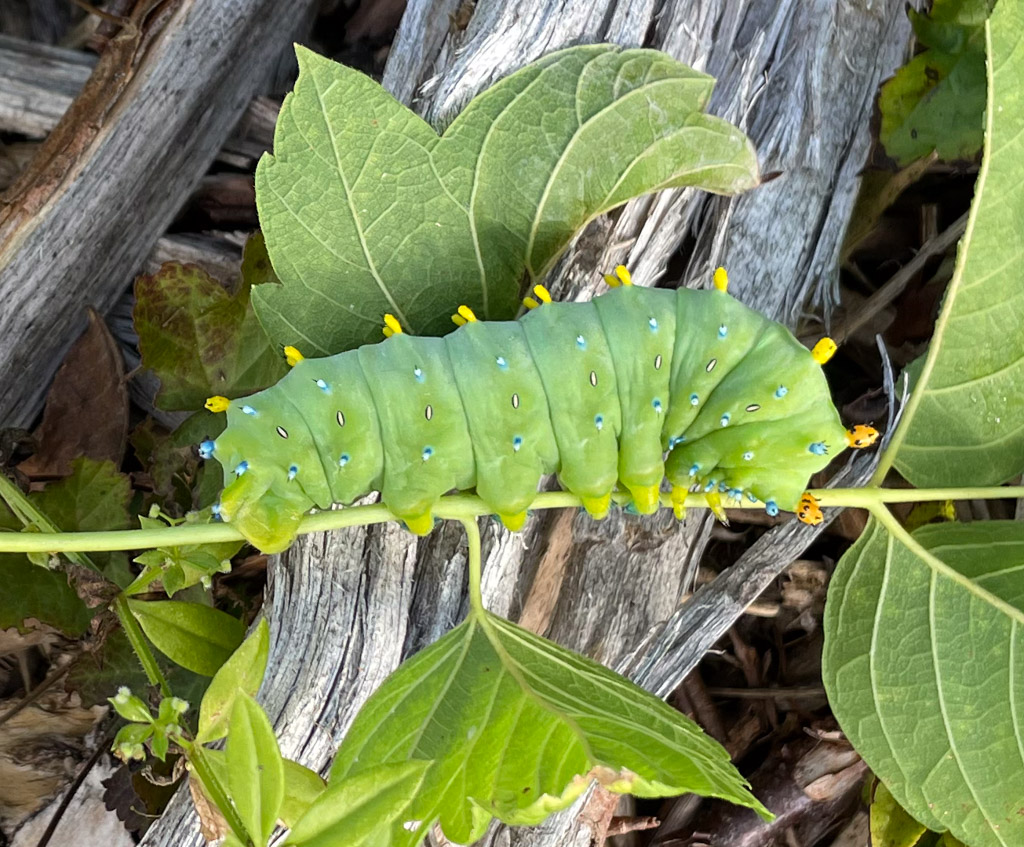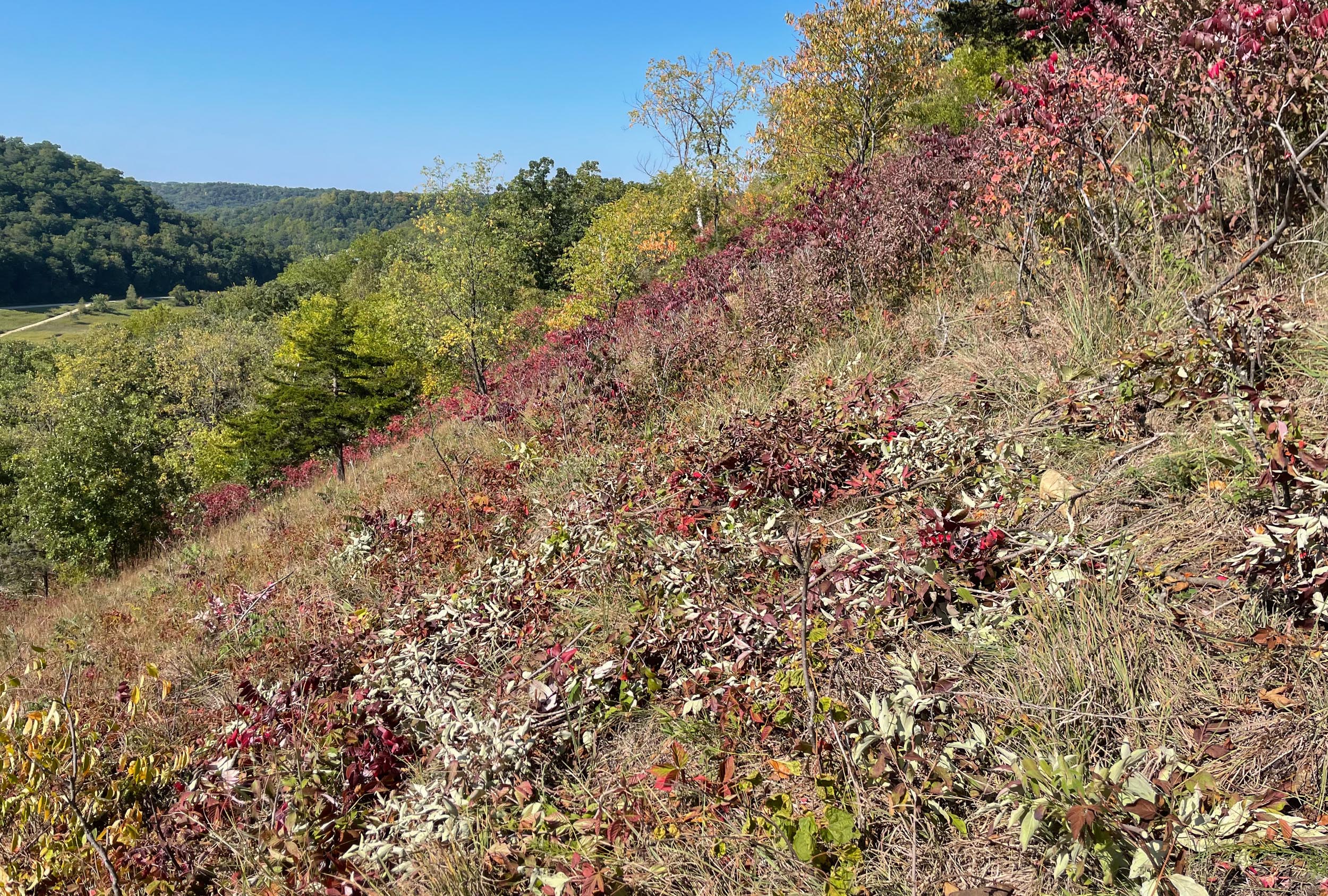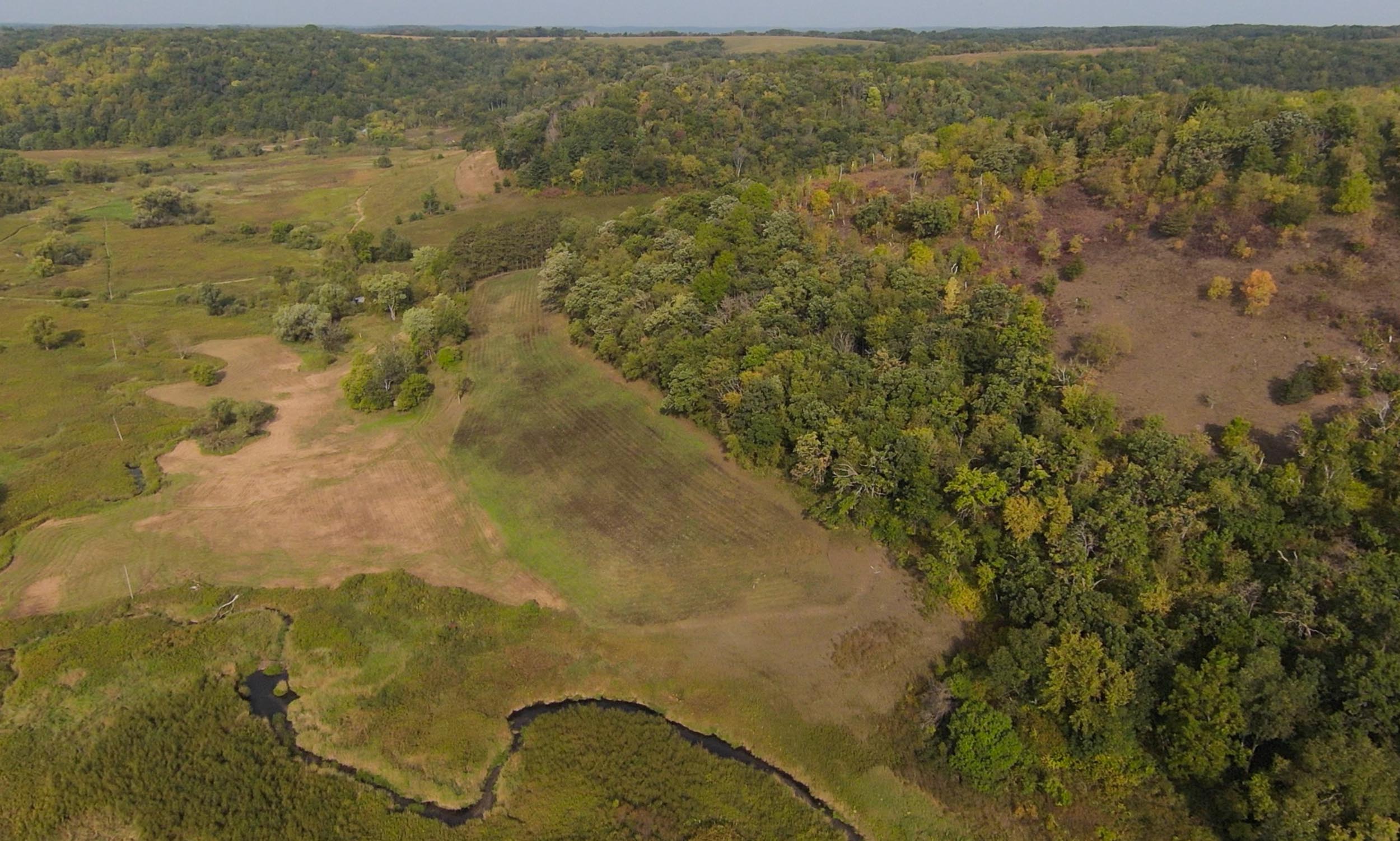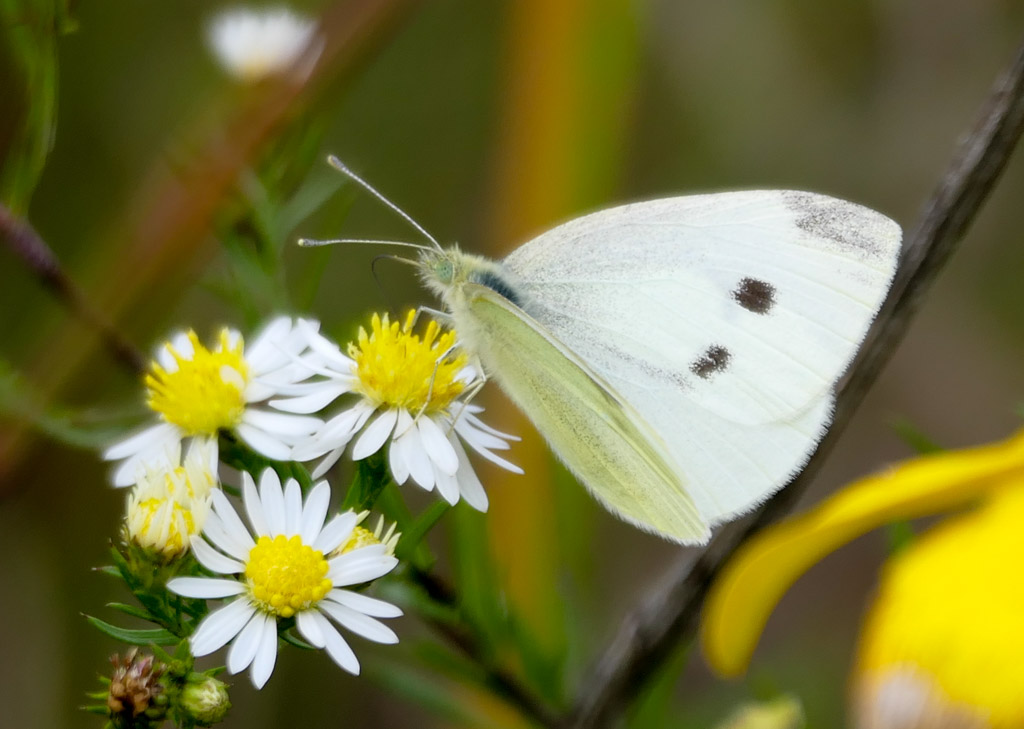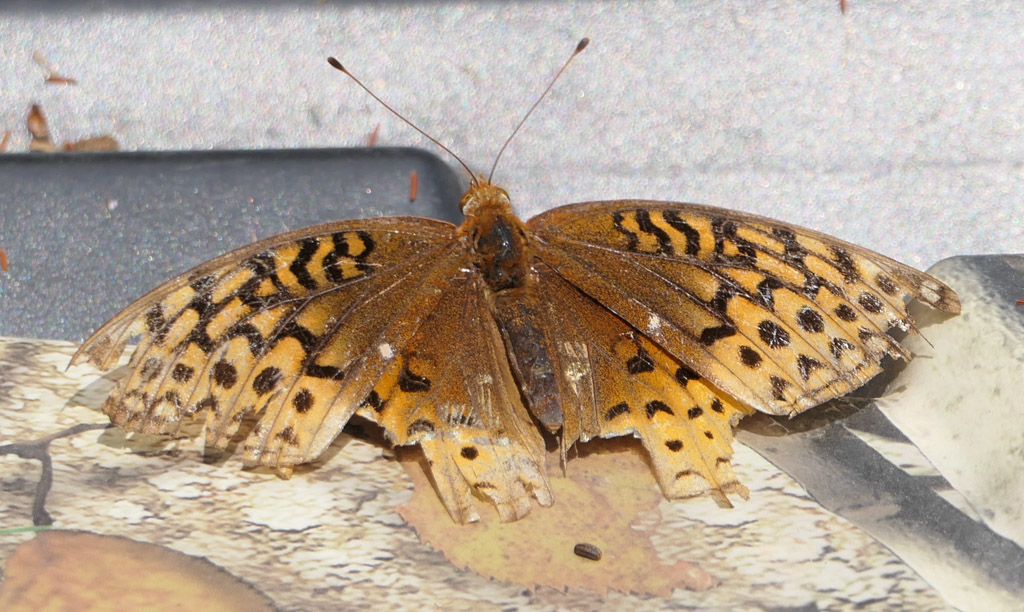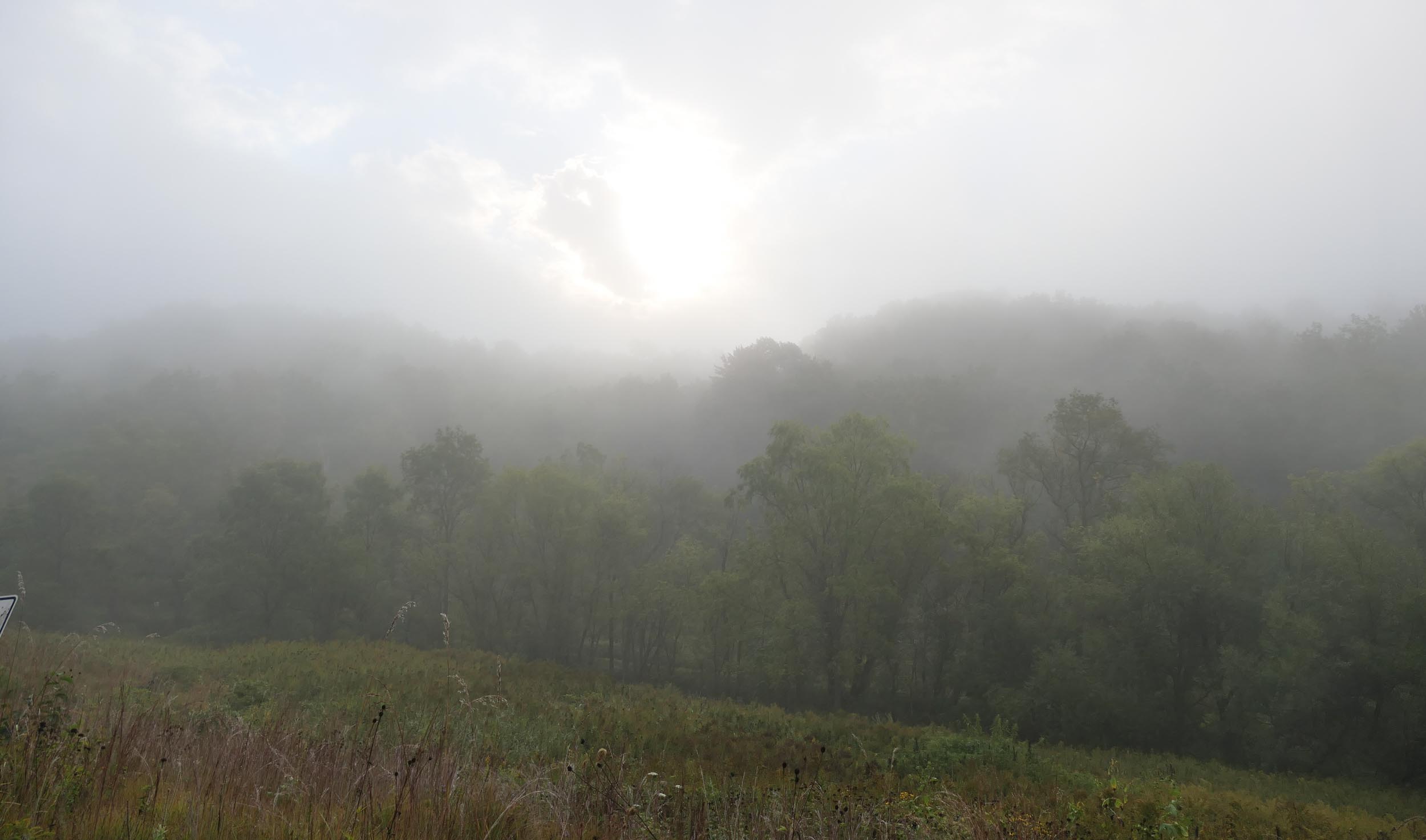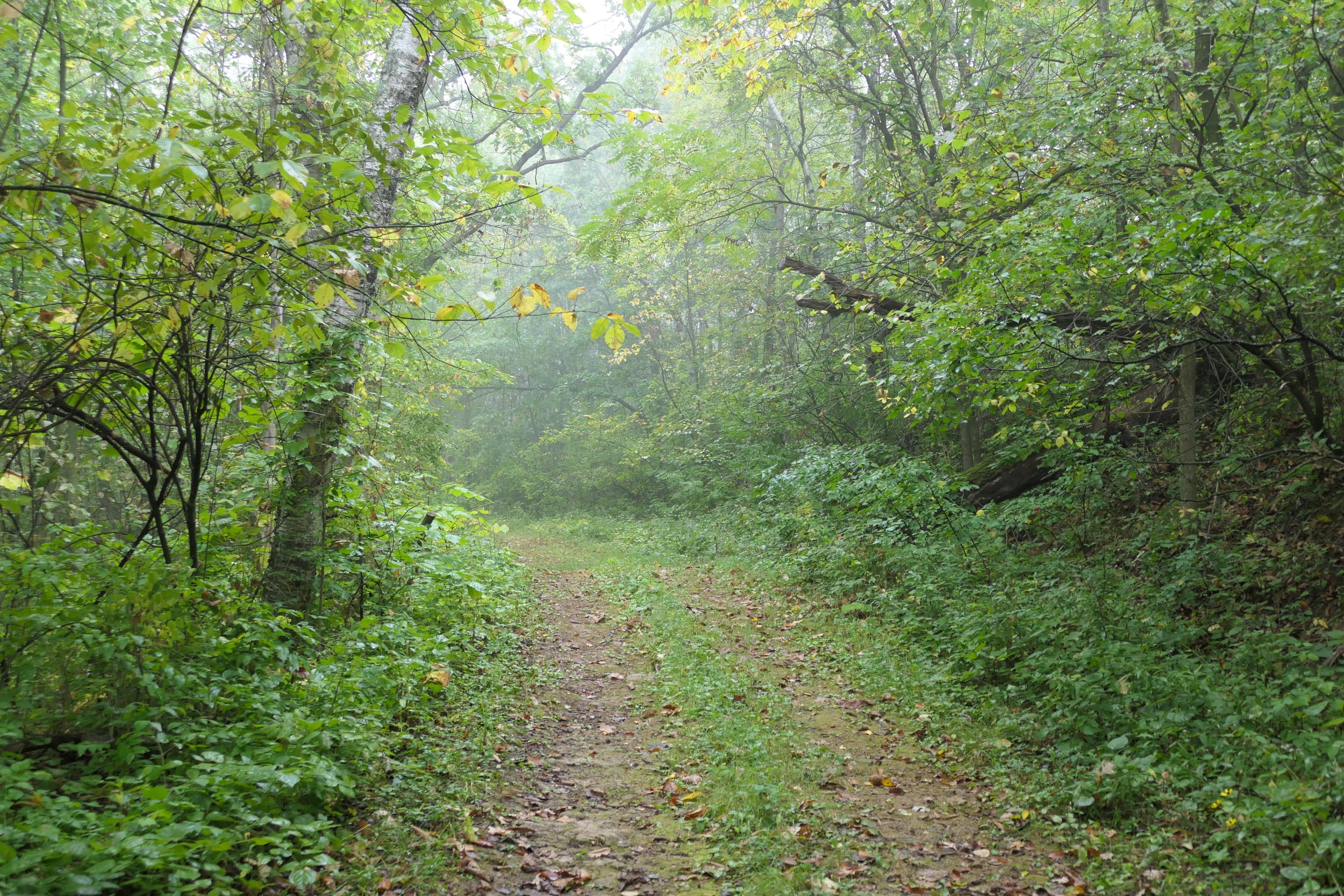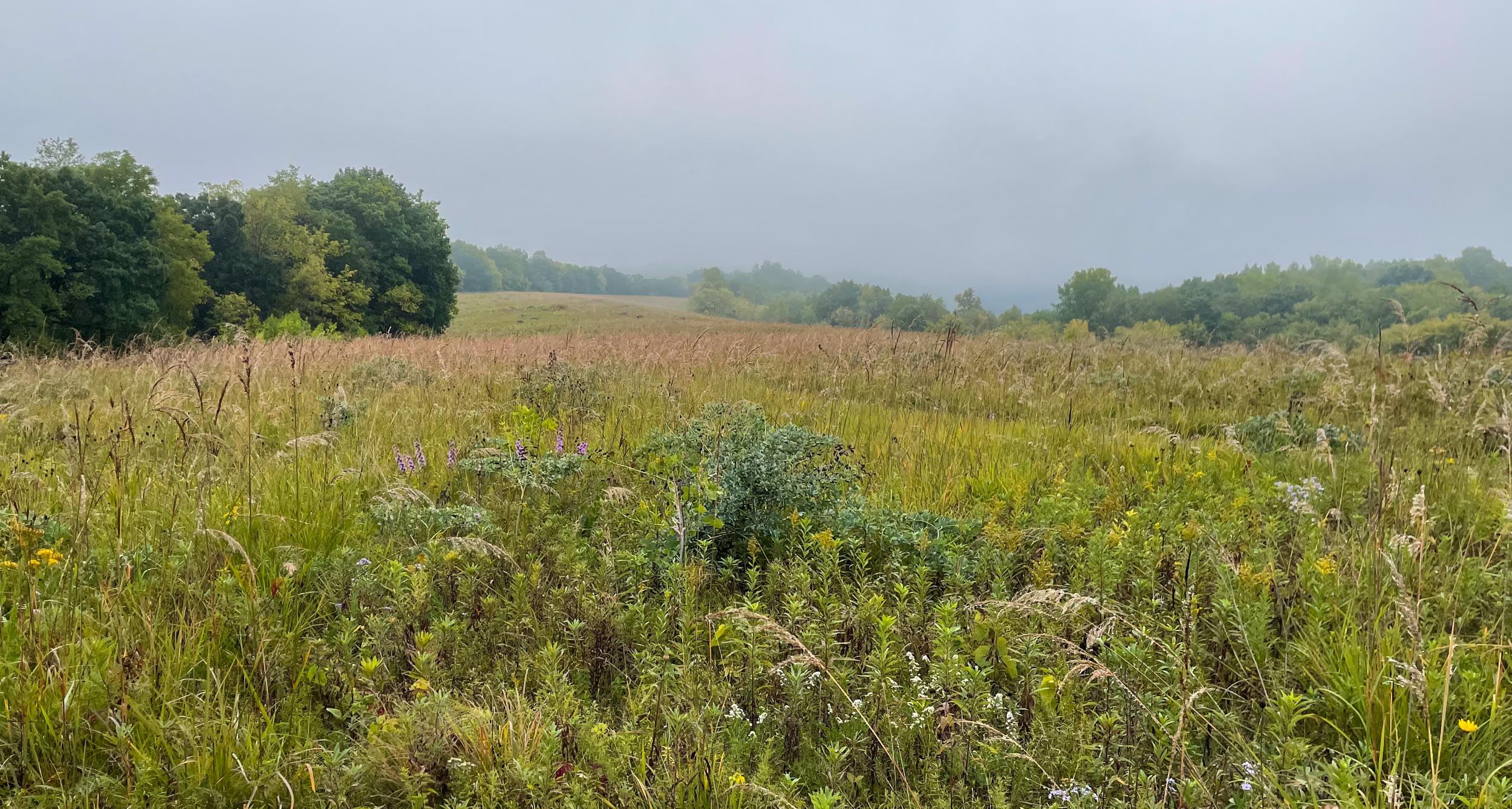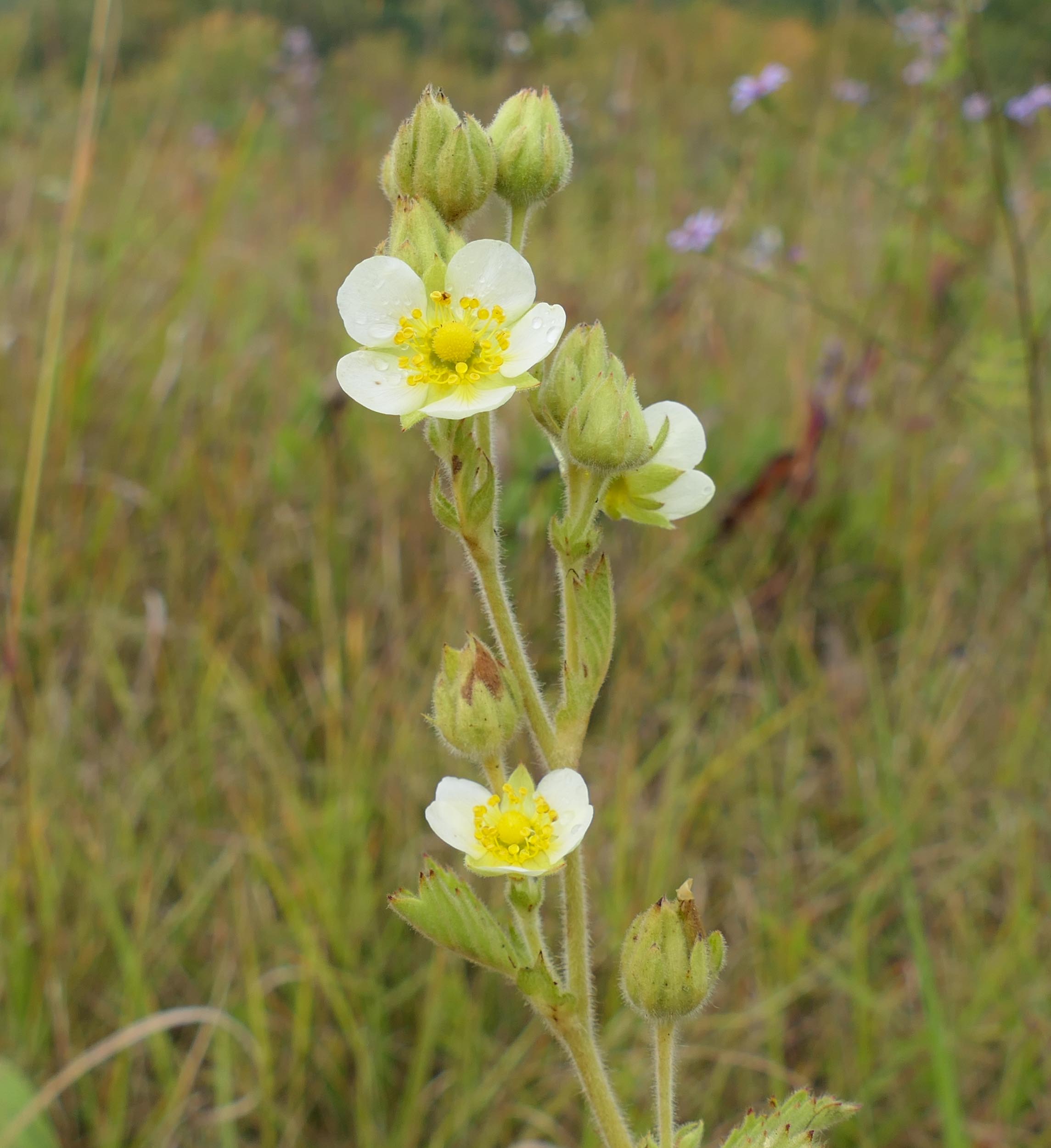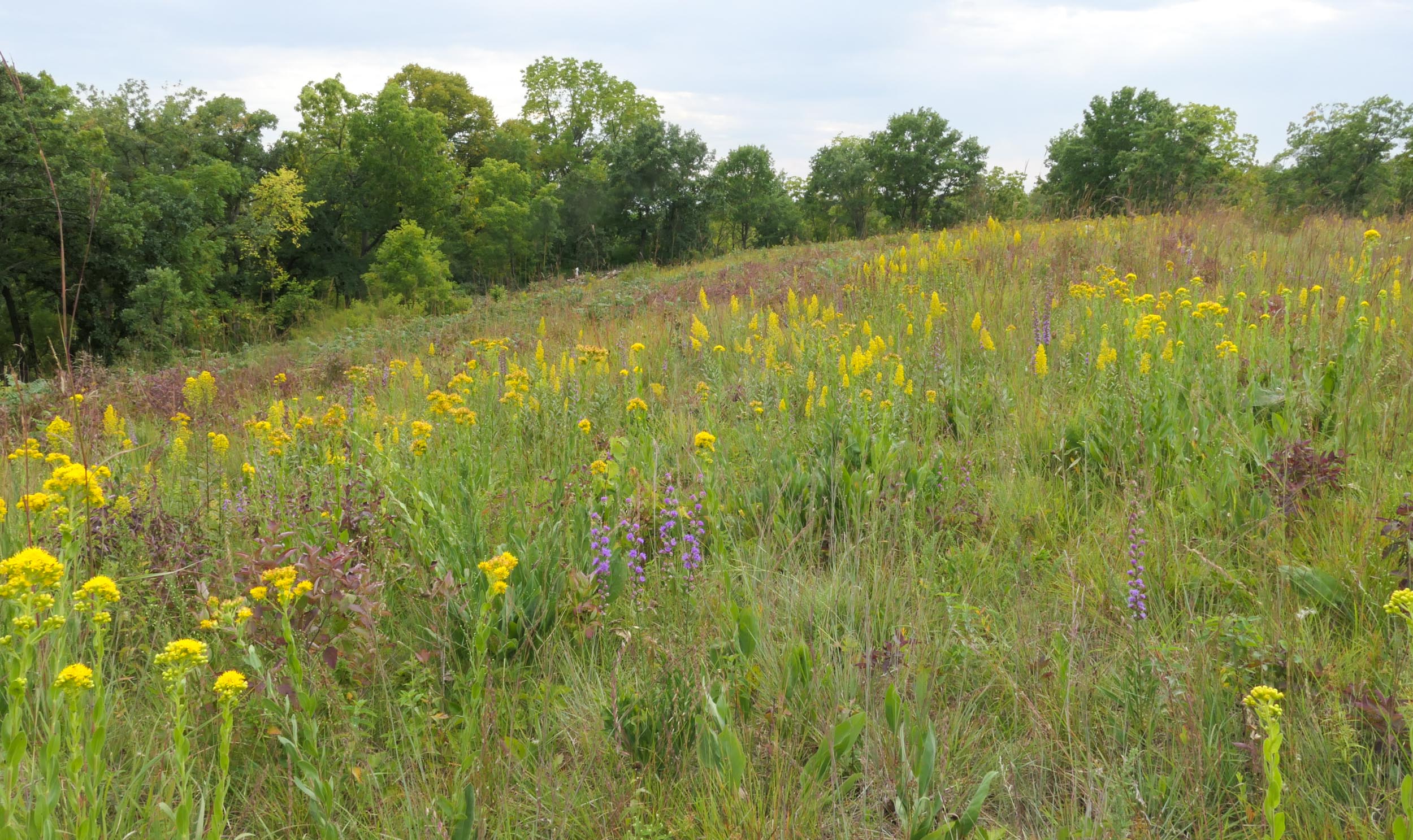Finally – some rain! The landscape is looking greener and the mornings are mistier.
Early morning Monarch
Red Maples are turning red, Black Walnuts and Wild Cherries are yellow, but most of the trees are still green.
Our first big project this month, once it got cool enough to be able to work outside, was to finish taking out the fences in the fields near the creek. This is one that was still standing – it’s trickier to take them out if they’ve fallen over and gotten partly buried.
This one was easy – we used the tractor to pull out the posts, and then rolled it up and hauled it away.
After the fences were gone, Mike mowed the fields. Once they green up we’ll have them sprayed so they’ll be ready to plant with wet prairie seeds this winter.
Another big project has been mowing and clearing the top of Pine Point Prairie. The strip just below the trees was once a pine plantation. We had it logged in 2002, and it grew up into a brushy tangle. Since then we’ve been working on clearing the brush, planting prairie, and restoring the savanna above it.
Here’s a slider that tells the story.
Erik – from Kule Region Forestry – mulched the remaining brush last year with his big machine (see the last photo in the slider), so now Mike can mow it. Here his mowing is about half finished.
The western section was a thicket of honeysuckle, buckthorn and Box Elder that Erik was able to mow down. Since it was cut but not treated, it’s all resprouting, so I’ve been cutting and treating the sprouts with herbicide.
Here’s a drone photo Mike took of that spot.
When I turn around, there’s a wonderful view down the valley.
This is Mike’s drone photo of Pine Point: the mowed former pine plantation at the bottom, above it the partly restored savanna, and above that Big View Prairie – a dry prairie remnant.
While cutting a Box Elder shrub, I found a large, healthy Cecropia caterpillar eating the leaves.
I also found several leaf mines – lines on leaves showing where tiny caterpillars have eaten their way along between the upper and lower surfaces of the leaf. This one is on American Burnweed.
A few days ago the adult moth emerged from the leaf. It’s one of the smallest moths I’ve ever photographed – about 2 mm long. Phyllocnistis insignis – it doesn’t have a common name.
Every September I walk up the hill to Sumac Prairie – our largest and steepest dry prairie remnant – to see the Northern Flower Moths. The prairie is difficult to get to, and very steep.
Northern Flower Moths are unusual small day-flying moths that only fly for about a week in early September. Their caterpillars eat the flowers and seeds of the purple asters that live on dry prairies. This year I saw 3 moths – one flying, this one on Silky Aster….
…and this one on Sky Blue Aster.
I did a little clearing work while I was up there – cutting and treating Sumac and Gray Dogwood.
Here’s another of Mike’s drone photos. It shows the newly mowed wetland meadow at the bottom of the hill, the browner mowed field just above it that we call Sheep Hill Meadow (planted into prairie a few years ago), a large overgrown savanna, and then Sumac Prairie.
We’re still seeing some late season butterflies.
This is a very fresh Eastern Comma – it will spend the winter as an adult, hiding from the cold behind bark or in a brush pile.
Cabbage White. We don’t see this species often – they usually prefer more disturbed habitat – but I’ve seen several in the last few days.
There are still a few Giant Swallowtails.
Painted Lady – the first one I’ve seen this year
American Lady on New England Aster
Great Spangled Fritillaries are looking very tattered. They’re at the end of their lives – laying eggs that will hatch into tiny caterpillars that will overwinter.
We’re still seeing a few migrating Monarchs.
A Yellow Bear Caterpillar – the larva of a Virginian Tiger Moth – on Stiff Gentian.
This tree frog – probably a Gray Tree Frog – visited my moth lights.
Sedge Wren
Ruffed Grouse
Misty sunrise
Some mornings I drive up the hill into a cloud.
The cloud in the Narrows Prairie
Buffalo Ridge
Knife Edge Point with mist
Sneezeweed is blooming in the wetland.
Showy Goldenrod blooms later than the other goldenrods, and is a favorite nectar and pollen flower of both bees and migrating Monarchs.
Tricolored Bumblebee
A ‘mating ball’. The large bee in the middle is a Common Eastern Bumblebee gyne (new queen). The smaller bees are all males. Under all of them is the one successful male which is actually mating with her.
Prairie Cinquefoil
Fringed Gentian – my favorite late blooming flower
The view from Hidden Oaks Point
Fall wetland – the wet end of East Center Valley Prairie
The Knife Edge Prairie with Showy and Stiff Goldenrod, and Rough Blazingstar.

